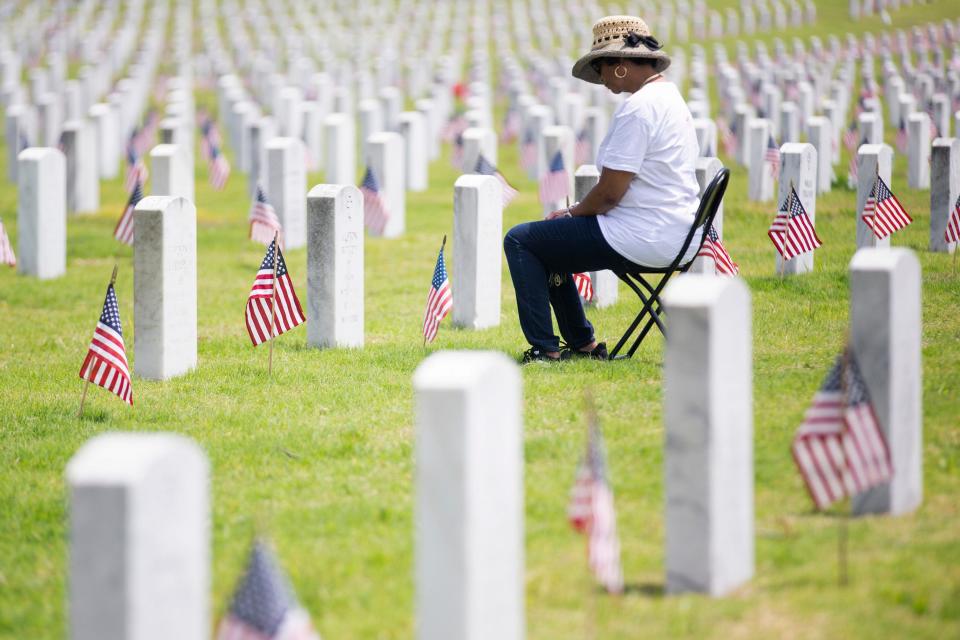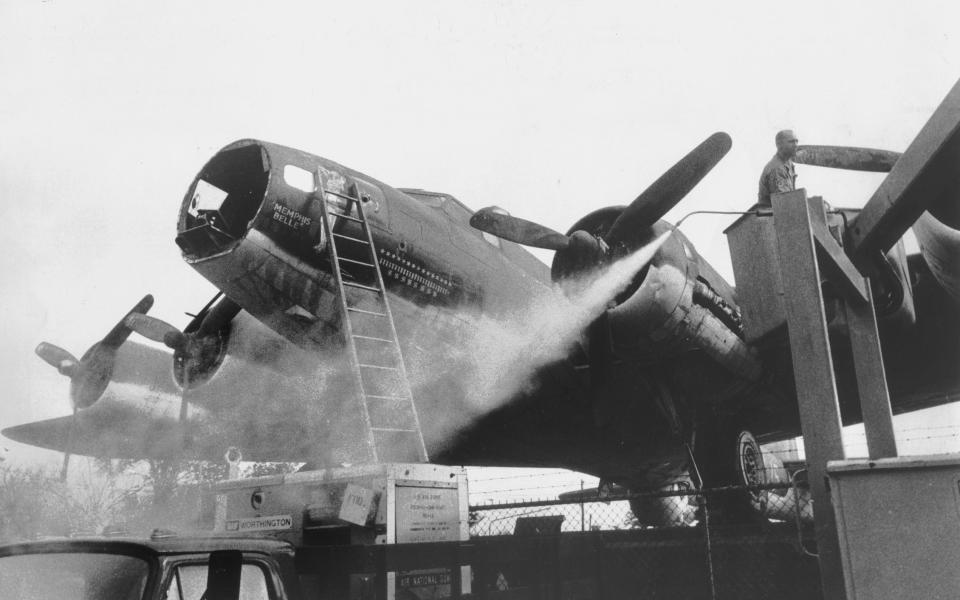Remember the military air crews, including the Memphis Belle, who fought in World War II
This Memorial Day, as our nation collectively recalls its war dead, there has been an increased interest in the diminished number of World War II veterans. This welcomed and necessary attention honors the ones who sacrificed so much, both the living and the dead.
The men and boys that manned the bombers over the European, Pacific, and China-Burma theatres were undoubtedly a special breed in dedication, skill and bravery.
The sheer losses they absorbed in the very unforgiving skies over enemy territory bespeaks of these attributes. The Army Air Corps, the predecessor to the Air Force was populated by high school dropouts, college graduates, and men of every stratum and locale of the nation. The common ingredient was to get the job started, and victory at any cost.
The Bomber commands in the different theatres had similar tasks, however dynamically different opposition, and strategies.
How the air crews developed a esprit de corps
The familiar B-17 was joined by the heavy bombers of the B-24 Liberator and B-29 Superfortress units as the war progressed.

Together they formed the nexus of all strategic bombing of U.S. forces in the war. The typical B17 crew consisted of ten men: two pilots; navigator; bombardier; and six gunners, two of which ran radio and engineer operations.
Crews would occasionally switch up, however they typically stayed together in these All-Volunteer units.
The closeness of working together affirmed the esprit de corps these crews developed. The initial US bombing runs – excluding the famous Doolittle Raid of April of 1942 – were in the summer of 1942. As time progressed tactics would change with bomber formations utilizing different flight ceilings, innovative formations, and avenues of approach. The US was the first of the allied air to initiate daylight bombing campaigns, and this undoubtedly increased the dangers of an already treacherous endeavor!
A critical point of the Korean War: Remembering the Battle of the Chosin Reservoir
Pilots risked life and limb in dangerous missions
By mid-1943, the life expectancy of a bomber crew was 11 missions, certainly enhancing in the minds of the men, the precarious nature of this business.
As raids became more frequent and larger, losing 10%-plus-or-minus of the aircraft with another 25% damaged became normal.
The learning curve was steep among both the commanders and crews and begotten at great cost in lives. Men in both the European and Pacific theaters faced a multitude of dangers when approaching targets. Highly effective anti-aircraft fire (flak) in Holland, Belgium, France, and Germany was ever-present.
In the first two years of the war, bombers flew with extremely limited fighter escorts, and when they had this accompaniment, it was only for certain distances due to fuel constraints by the fighter aircraft.
It wasn’t until January of 1944, and the introduction of the P-51 Mustang, that the deep penetration raids into Germany and beyond could expect the much-needed fighter support.
The men of the Memphis Belle was one such crew that game fame
The raids into Germany encountered an assortment of dense anti-aircraft fire, never seen at this level in combat; then waves of Luftwaffe fighters would swarm the formations from every side with canon and machine-gun fire, as well as rockets- all the while strafing the planes and crews alike.

The large raids at Munster, Ploesti Oil Fields, Berlin and dozens of factories, railyards and munitions depots highlighted stories of horror and bravery into the annals of history.
One such campaign, which achieved the moniker of Black Thursday, involved two Bomber groups of the celebrated 8th Air Force. The task was to hit the ball-bearing plants at Schweinfurt and Regensburg. Of the 376 planes involved, nearly 70 were shot down, with another 25 percent damaged beyond repair. Six hundred fifty airmen were either killed, captured or wounded on the terrible day. The week’s total was 148 planes lost, along with 1,500 crew members. It was during these necessary and desperate times that long-range bombing was suspended until fighter escorts had the requisite fuel capacity to stay with the Flying Fortresses the entire flight.
These air-to-air encounters with German or Japanese fighters were dramatic scenes at a maddening pace, with the gunners in the back, belly and doors exposed to this onslaught of fire. One such crew of fame in Europe, were the men of the celebrated Memphis Belle. The first to make the minimum twenty-five missions. Enshrined into history, the crew of the “Belle” came home to a hero’s welcome and has become a part of the American lexicon.
As the beloved Flyboys of this era dwindle in number, may we never forget- nor surrender to time their memory. Their faith, strength and sacrifice are too precious.
Cobb Hammond, a longtime financial adviser in Memphis, writes regularly about military history.
This article originally appeared on Nashville Tennessean: Memorial Day: Remember the sacrifices of the World War II airmen

